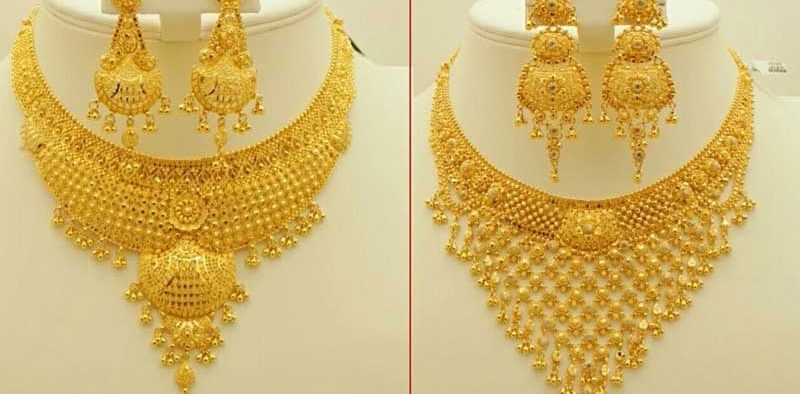Per tola gold price witnessed an increase

The per tola gold price witnessed an increase of Rs450 to Rs115,100 in the domestic market.
Likewise, the rate of 10-gram gold also increased by Rs300 to Rs98,679, according to the All Pakistan Jewelers Association.
Meanwhile, gold prices in the international market rose as the dollar slipped.
Spot gold climbed 0.4% to $1,951.13 per ounce, having fallen to a one-week low in the previous session.
U.S. gold futures were up 0.6% at $1,960.80.
The dollar index was down 0.1% against its rivals, making gold more attractive for buyers holding other currencies.
Silver fell 0.5% to $26.97 per ounce, platinum dipped 0.4% to $936.69 and palladium slipped 0.8% to $2,316.58.
Earlier on September 15, the per tola gold price had witnessed an increase of Rs400 to Rs114,400 in the domestic market.
According to the All Pakistan Jewelers Association, the rate of 10 grams of the precious metal had increased by Rs343 to Rs98,080.
There are many factors that contribute to the current price of gold. Chief among these factors is the strength of the US dollar. Traditionally gold has an inverse relationship to the value of the dollar. In other words, when the value of the US dollar is strong, gold prices go down. Related, the strength of major economies also has an inverse relationship to the price of gold – at least when an economy has a significant downturn. All of this is due to the “safe haven” status gold has traditionally had in the investment world. Gold prices are historically far more stable over the course of time than economies and other classes of investments.
Supply and demand, of course, also play a key role in the price of gold per gram or ounce. There is only so much gold to be mined and gold mining is not cheap. When gold demand outstrips gold supply, the price of gold goes up. The chief areas of gold demand are in gold jewelry. In 2017, 46% of the demand for gold was for jewelry. There is also the use of gold in industry for such things as electronics and medical devices.









